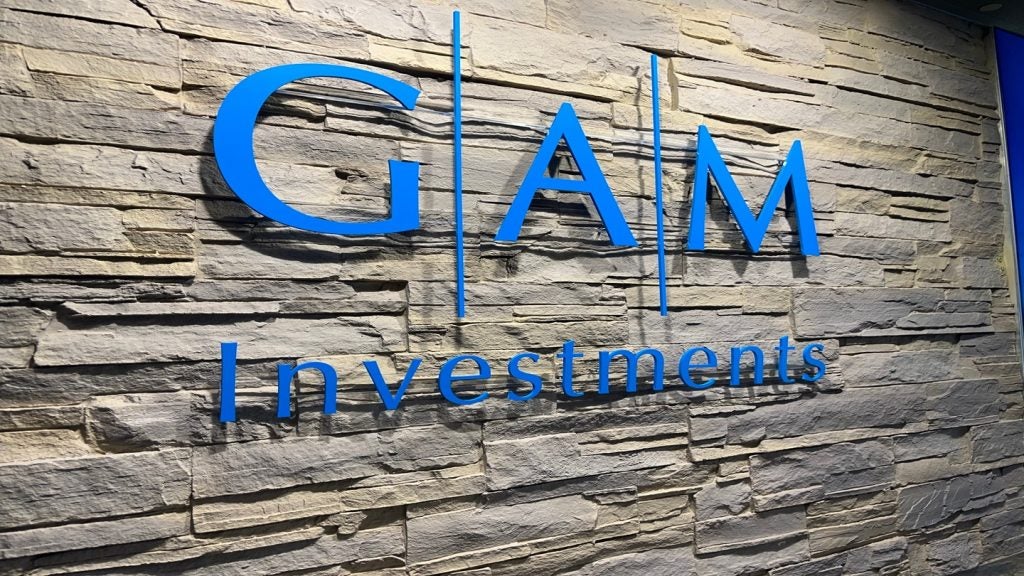
As Oscar Wilde said, to expect the unexpected shows a thoroughly modern intellect. But no one could have predicted that with Covid-19, business continuity and resilience would mean people working from home rather than transferring en masse to another site. Alison Ebbage writes
Speaking to PBI, Rob Thomas, executive director at Coutts comments: “When you usually look at business continuity, the focus is on one given site having an issue and whether the firm has the ability to make data safe and relocate operations to another site.
“There’s never really been any consideration given to everyone having to work from home. So the focus has been on whether the IT systems can be transferred to another site. But Covid-19 has been all about remote connectivity and people having access to mobile phones and laptops.”
A pandemic of change
Covid-19 has indeed tested business continuity plans for wealth managers. Although operations have remained largely intact, certain flaws have shown up. Notably the need to accelerate moves towards digital collaboration, as well as the need to maintain the means to reach out to clients, have arisen.
In terms of operations, systems have held firm and most wealth managers have had the capacity to process large trading volumes in the lead up to lock down as well as ensure operations can continue. Ian Woodhouse, head of strategy and change at Orbium, says investment in technology has served the sector well.
Speaking to PBI, he says: “On the technology side, there have been moves to replace and upgrade core platforms as part of an overall emphasis on the technology stack. There have also been moves towards a digital model in line with a broad consumer move to digitisation and overall expectation that services and relationships can be conducted by, and enhanced by, digitisation.”
But survival in a storm is not the only challenge. High net worth clients are used to being in control and having high levels of bespoke, personal service. They are also not averse to switching provider should the service not match expectations and so, Covid-19 or no Covid-19, wealth managers need keep their clients at the forefront of their minds and know that in a business reliant on delighting clients, the need to stay relevant and surpass expectations is ever present.
For some wealth managers, this has meant a heavy reliance on the skills of wealth managers themselves in terms of keeping in touch with clients and being supportive, either over the phone or via Skype, Zoom or similar platforms.
Thomas adds: “We have a lot of client goodwill and the clients were understanding of the situation. We kept in contact with our clients to tell them what we were doing and how we were doing it, and to see what help they needed. We successfully managed expectation, and that made our transition to remote working much smoother than it might have been otherwise.”
But Woodhouse says: “This is reassuring for clients; however, in terms of functionality it is limited because any data is static, so portfolio valuations and the like are not always up to date. It is heavily reliant on the skills of the wealth manager to enhance the relationship.”
A more dynamic approach, he says, is still dependent on the skills of the relationship manager to develop the relationship, but is also aided by technology.
“This approach has required more investment in technology, and in particular a digital front end, to ensure than not only the relationship can continue but that the functions of the wealth manager can also be carried out,” he says.
In this model, the wealth manager has a modern core platform that can be accessed remotely and securely so as to access data and functionality such as digital signatures, live portfolio valuations, modelling and risk assessment, and also for the provision of curated and personalised content.
Front end
Having the capability to feed all that into a digitised front end is key. It is no good having an amazing core banking system if the relationship manager cannot make it available to the client and the client cannot use it.
Alessandro Tonchia, founder and director at Finantix, explains to PBI: “When Covid-19 initially kicked off, transaction volumes went through the roof. A bank’s ability to transact, communicate with clients was sorely tested.”
Thomas adds that the Coutts app saw a significant spike in downloads: “To support that, we beefed up the support available to new app users so that we enabled and supported clients to use our online tools quickly and without stress.”
He cites the case of e-signatures too, as something that has made life easier, adding: “We were in the process of moving towards e-signatures, but we have brought them forward in order to make things run as smoothly as possible – this is one way of ensuring that things can still progress for our clients.”
However, if clients cannot use digital tools, then their presence is ineffective.
Speaking to PBI, Michael Stemmle, CEO at digital specialist additiv, states: “Behaviour has clearly had to change dramatically, and so too must the model. Resilience means can the client comfortably use a high-touch service? Is screen sharing and videoconferencing available? Can risk analysis be done? Can the advisor and the client work together to see various ‘what if’ scenarios and add in or take away things?”
A timely launch to this end has been a new digital hub from Finantix. It allows for real-time conversations with the clients, but also offers the ability for other specialists from the wealth manager – such as tax planners or lawyers – to see a chain of events and conversations, and to essentially change a linear conversation from client to relationship manager to specialist into a more circular one. It is essentially the same principle as having a single golden copy of data, transferred to conversations and documentation.
Tonchia comments: “It’s really about being able to connect with all the specialities remotely and tracking what the client has seen, what the conversation was, what other things need to be taken into consideration and so on. It’s about a long-term collaboration and an investment strategy rather than a series of transactions.”
He says Covid-19 has served as an accelerator to digitisation, throwing a spotlight onto existing issues: the need to have a flexible digital front-end proposition supported by a robust core banking offering.
“Covid-19 is really forcing the last mile of digitisation. It is all about the set-up to access data remotely, yet to keep the intimacy with the client. Being able to operate remotely with the client and stay compliant and secure is no mean feat,” he says.
But however sophisticated a front-end digital proposition is, there are some things that cannot be replaced and instances where the face-to-face time is needed.
Thomas comments: “Where things have been evolving is how to replace the face-to-face interaction we would normally have at our flagship office or elsewhere. With longstanding clients, we have been able to move to Zoom meetings and so on, but with newer clients where the relationship is still in the building stages, this is not ideal, as we would like to see them face to face.”
He also points to Coutts’ extensive networking and events programme, which is very popular with clients and which has partially been replaced using virtual tools.
“Clients like events and have adapted,” says Thomas. “We saw a record-breaking attendance at a client Zoom conference, Coutts in Conversation, with Nobel Laureate Professor Nurse of the Crick Institute and our chair, Lord Waldegrave. We’ve also hosted a virtual wine-tasting event that had hundreds dial in, and have ramped up the regular communications from Peter Flavel, our CEO.”
Compliance
A dazzling front end to ensure continuity and resilience is one thing; being able to support that with core banking infrastructure is another. Compliance is a particular issue, because real-time transacting is not possible if the compliance is not in place.
Tonchia comments: “When it comes to compliance, there is the need to be able to carry out suitability and risk profiling, and all at scale in an auditable fashion so it can be digitally consumed.
“There also needs to be a compliance filter on all communications, and to generally make sure that all controls, checks and balances are in place.”
Put simply, without compliance that can be automated, scaled and fed from a digital front end, a bank does not have the consistent means to provide a service.
The other issue, of course, is whether the core banking system can cope with periods of intense activity, as was seen in the run-up to the lockdown period.
Being able to crunch large volumes of data and turn them round quickly and compliantly has long since been an issue for banks – and happily, one that has by and large been dealt with, thus providing not only business continuity and resilience, but also an increased level of operational efficiency.
Woodhouse comments: “The core banking systems have largely coped with increased volumes. Estimates show that the volume of transactions increased by 50% at the outbreak of Covid-19, and yet the infrastructure worked at the stock exchange, and the IT stack and core banking systems within wealth managers were also able to cope with this huge spike.
“An approach where the core banking system is state of the art, combined with a digital front end, confers the advantage of being able to operate dynamically and move things forward, rather than just ‘not collapsing’ and ‘coping’ with a situation rather than moving with it.”
A large contributor to this has been the move to cloud-based core banking systems that are hosted remotely in either private or shared clouds.
This, combined with a move to a single golden copy of data, has given banks to opportunity to reorganise themselves so as to be more efficient and dynamic when it comes to holding and analysing their data, which is key when volumes are through the roof and every single client wants to be looking at real-time risk analysis.
Stemmle says: “Working on a cloudhosted platform brings things out of siloes and gives users an end-to-end experience instead. It is perfect for both the customer and the operating model, because it makes for frictionless collaboration internally, and that then feeds through to the customer at the front end.”
Having robust systems in place already has, no doubt, been enormously beneficial.
Thomas explains: “Security within the mainframe and core banking system is also important. We are lucky to be on the RBS mainframe banking system, so we had no issues with security protocols – this gave us a good footprint to be able to transition to home working.”
That security does, however, also need to be applied to third parties that link into the mainframe and core banking system, but again, happily, this is something already largely dealt with by banks.
Stemmle comments: “This has really been a kick-start for a process that needed to happen anyway. Covid-19 has revealed where the gaps are and provided the impetus to act to close those gaps and provide a 360-degree service that will work, no matter what the location. This will retain its importance. Continuity and resilience are all about being able to transform and adapt.
“Obviously, this sometimes involves some short-term pain, but the cost of not making the change far outweighs the risk of the change. The perception is that digitisation allows a better service at a lower cost, and this is a wake-up call to provide better and sustainable models where transparency, risk management, intelligence and personalisation are all provided as standard.”
Four factors
Identifying the key factors that have been central to success, Woodhouse says: “The most resilient banks have four things in place: they have been able to accelerate their digital ambitions so their interactions can be digitally driven. Their IT stack has a good core banking platform in place; the books and records are all up to date and can connect and communicate both with the front end and with the stock exchange or other third parties.
“Their data is centrally held, clean and accurate, and they are able to negotiate that data for analytical purposes and negotiate AIdriven inferences that allow for personalisation. Finally, the security has been robust enough to allow for remote and online access.”
Tonchia concludes: “Clients who are multibanked will be quick to identify which banks did well and those that did not. The stress on the system was such that a friendly phone call was not enough, and the weaknesses were exposed. Those that were able to react, provide insight, adjust portfolios and do so quickly and compliantly are those that will have impressed clients.”







